Posts Tagged ‘“car accidents”’
Car Accident Deaths Rise Among Teens
 After several years of decreases in U.S. teen driving deaths, new data shows the number climbed slightly in the first half of 2011.
After several years of decreases in U.S. teen driving deaths, new data shows the number climbed slightly in the first half of 2011.
Car accidents have long been the leading cause of death among U.S. teens, accounting for more than one in three fatalities, according to the Centers for Disease Control and Prevention (CDC). But new preliminary data collected by the Governors Highway Safety Association (GHSA) shows an increase in teen driving deaths as the number of overall highway deaths is declining – as is the number of overall teen deaths. The data was submitted to the National Highway Traffic Safety Administration (NHTSA).
The data shows the number of 16-year-olds killed increased from 80 in the first half of 2010 to 93 in the first six months of 2011. The number of 17-year-olds killed rose from 110 to 118 during the same period.
The nation has not seen an increase in eight years. During that time, many states have passed graduated driving laws for teenagers with a goal of reducing car accident deaths. The Massachusetts Junior Operator Law states drivers under 18 cannot drive with another passenger under 18. The only exception is for for siblings. Teen drivers are also not allowed to drive between 12:30 a.m. and 5 a.m. In September 2010, the Safe Driver Law took effect, prohibiting drivers under 18 from using cell phones while driving.
In a Washington Post article published Feb. 17, Barbara Harsha, executive director of GHSA, called on Congress to provide financial incentives to states which have strengthened teen driving laws and for the NHTSA to work on efforts to reduce distracted driving among teens and increase seat belt use.
A Pew Research Center study showed 43 percent of teens have talked on a cell phone while driving and 48 percent have been in a car with an operator who was texting while driving.
Related:
Car Accidents in Massachusetts Would Be Reduced Under Cell Phone Ban
 A ban on using hand-held cell phones behind the wheel was approved by the Massachusetts Legislature’s Joint Transportation Committee this week.
A ban on using hand-held cell phones behind the wheel was approved by the Massachusetts Legislature’s Joint Transportation Committee this week.
On Thursday, the committee voted 8-0 to move forward the bill which advocates say will reduce car accidents, driving injuries and motor vehicle deaths. Some lawmakers did not vote on the ban, which was also discussed in 2010. That year, a new law took effect to reduce motor vehicle accidents by banning drivers under 18 from using cell phones to talk or text. All other drivers were banned from texting while driving.
Under the proposed cell phone ban, drivers would still be allowed to use hands-free cell phones with Bluetooth and other devices. Many safety advocates say hands-free cell phones are safer and this type of ban will help police better enforce the law. Right now, police say it is difficult to differentiate between drivers dialing a phone number and sending a text message.
As a result, police only wrote 1,100 tickets for texting while driving in the law’s first year, according to the Department of Transportation. This averages one for every 200 speeding tickets issued among Massachusetts’ 4.7 million drivers in the same period.
The hand-held cell phone ban will now be sent to the Massachusetts House of Representatives and Senate. The Ways and Means Committee may also consider the financial aspects of it.
If approved, Massachusetts will become the 10th state to ban any type of cell phone use while driving.
The national debate over cell phone use and car accidents has been growing stronger.
In December, the National Transportation Safety Board (NTSB) called for a nationwide ban on driver use of portable electronic devices (PEDs) while operating a motor vehicle. U.S. Secretary of Transportation Ray LaHood said he opposed including hands-free cell phones.
Click here to read more about the proposed hand-held cell phone ban in The Boston Globe.
Read More
Safe Driving Must Be a Priority During Holiday Season
 Dangers increase for drivers in the period between Christmas Eve and New Year’s Day. There is more traffic on the road, drivers are often growing accustomed again to operating in the snow and many people are drinking and driving. These factors often lead to an increase in motor vehicle accidents.
Dangers increase for drivers in the period between Christmas Eve and New Year’s Day. There is more traffic on the road, drivers are often growing accustomed again to operating in the snow and many people are drinking and driving. These factors often lead to an increase in motor vehicle accidents.
The Boston motor vehicle accident lawyers at Breakstone, White & Gluck, urge you to drive safely and offer these tips:
For Drivers and Passengers
- The driver and all passengers should wear seat belts.
- Have a Designated Driver.
- Carry the phone number for a cab company. Call them beforehand to ask any questions so you are not reluctant to call them later.
- Consider taking public transportation, such as a bus or subway if available.
- Stop drinking a few hours before you plan to leave.
- Stay where you are until you are sober enough to drive.
- Travel slow. More drivers and pedestrians may be on the roads for the holidays.
- If possible, familiarize yourself with your driving route during daylight hours and before the holiday.
- Parents should limit the driving of teenagers on the holidays to avoid car accidents.
For Party Hosts
- Offer both alcoholic and non-alcoholic beverages.
- Have a cab company’s phone number ready.
- Stop serving alcohol early.
- In Massachusetts, you have a legal responsibility to make sure your guests do not leave your home under the influence. If you are hosting a party and serving alcohol, learn about the Massachusetts social host liability law.
Motor Vehicle Accidents at Massachusetts Police Details
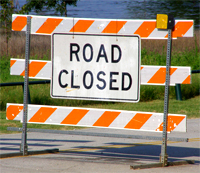 Massachusetts police officers assigned to protect public safety at roadside construction details are increasingly becoming the victims of car accidents themselves.
Massachusetts police officers assigned to protect public safety at roadside construction details are increasingly becoming the victims of car accidents themselves.
On Dec. 5, a Peabody police officer was struck by a 1991 Chevrolet pick-up truck while working on a Rte. 1 construction detail. He was thrown over the truck’s hood and transported to Massachusetts General Hospital with serious personal injuries. An initial police investigation found the driver was speeding, but it remains ongoing.
In recent years, negligent drivers have struck police officers on several construction details in Massachusetts and caused life-threatening personal injuries. In June 2010, state police Sgt. Douglas Weddleton was killed while working on a construction detail on Interstate 95 in Mansfield. The driver was charged with operating under the influence as well as other driving infractions.
Police officers are not the only ones vulnerable in construction site accidents. Construction workers as well as pedestrians, homeowners and others nearby are also at risk for injury, especially during night construction.
Drivers have a responsibility to operate with care in construction areas. Here are a few ways to make your travel safer:
Avoid Construction Zones If Possible. When you find a construction project on your daily commute, see if you can find an alternate route until work is complete. For projects in your local community, pay attention to your town’s government website and contact the police department’s business line if you have questions.
Identify Who Is In Charge of Traffic. Detail police officers typically direct traffic on many sites, but other work sites utilize civilian flaggers. The civilian flaggers should be dressed in fluorescent clothing and carrying traffic direction signs.
Give Other Drivers Space. Do not travel too closely behind other vehicles. It can be difficult to anticipate when another vehicle may stop short.
Slow Down. We all want to reach our destinations on time, but once you are stuck in construction traffic, it is best to take a deep breath and be as patient as possible to avoid a car accident.
Keep Your Eye on the Traffic. When there is a lot of activity going on at a construction site, there is a natural tendency to look at the crew and different machinery. But it is important to keep your eyes on the road.
Do Not Stop to Talk to the Detail Officer. Even if traffic volume is low, do not stop and ask the detail officer for help or directions. You are putting the officer at risk and confusing other drivers.
Avoid Construction Work Zones At Night. A large number of car accidents occur during night construction work because drivers are speeding, fatigued, operating under the influence or poor lighting.
Pedestrians and Cyclists. Like cars, it is also important for pedestrians and cyclists to follow the detail officer’s instructions for when to pass.
Read More
Driving With Dogs Is An Increasing Distraction On The Roads
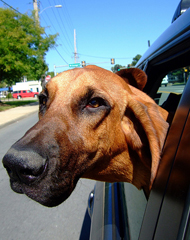 You are probably familiar with the list of distractions usually responsible for car accidents: texting while driving, talking on your cell phone, eating, the GPS and your children fooling around in the car.
You are probably familiar with the list of distractions usually responsible for car accidents: texting while driving, talking on your cell phone, eating, the GPS and your children fooling around in the car.
Well here’s another one to consider: if you are taking your family dog with you, there are additional things you should think about to avoid motor vehicle accidents.
Many people think about their dogs as affectionate friends, not as distractions on the road. But a new survey finds many drivers allow their dogs to ride with them in the car without restraints, increasing the risk for car accidents and serious injury to themselves and others, including the dogs.
The online survey by AAA and Kurgo, a manufacturer of pet travel products, polled 1,000 dog owners who had driven with their pets in the past year. More than half (56 percent) of the respondents reported driving with their dog at least once in the past month and 19 percent had taken their hands off the steering wheel to prevent their dog from jumping into the front seat.
Some 17 percent of the dog owners admitted to letting their dog sit on their laps as they drove and 13 percent said they fed their dog treats. Most alarming, 3 percent reported they had taken pictures of their dog while driving.
Only 16 percent reported putting their dog in a restraint while driving. Nearly 40 percent said they never considered buying a restraint and 42 percent said they believe their dogs are calm enough to ride without restraint.
While many of us have smiled at the sight of a dog hanging his head out of a car window, the survey highlights the fact that our dogs are becoming an increasing distraction on the roads. It is in everybody’s best interest to restrain animals in the car to avoid accidents.
The bottom line: Be your dog’s best friend. Get a proper restraint and avoid letting your dog be a dangerous distraction, even when just traveling around town on errands.
Read More
Prevent Teen Driving Accidents This Summer
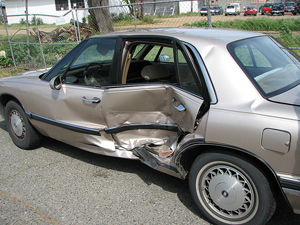 Summer is here and many teenagers who have licenses want to get behind the wheel and drive around with friends. But we all must remember safety first and to help them take precautions.
Summer is here and many teenagers who have licenses want to get behind the wheel and drive around with friends. But we all must remember safety first and to help them take precautions.
Motor vehicle crashes are the leading cause of death for teens in Massachusetts and across the country. In 2009, eight teenagers ages 16 to 19 died each day from motor vehicle injuries. When teenagers survive accidents, they may be left to cope with painful injuries that require years of recovery. And others are likely to be seriously injured as well.
The majority of teen car accidents happen within the first year a teen holds a license. The risk increases when teens drive with their friends or when they drive at night. While many associate drowsy driving with truck drivers, teen drivers are also likely to drive with sleep deprivation, increasing the likelihood of car accidents.
Many auto accidents result from driver inexperience. Because of this, teen drivers should stay on familiar roads for a few years. For example, it is probably too much for teenagers to attempt to drive from Worcester to Boston, Cambridge or Quincy during rush hour alone in their first year. Work up to distance. But talk to them about shopping plaza and fast food parking lots. These are frequent stops for teenagers. But parents can help teenagers by visiting stores with them, suggesting safe areas to park and talking to them about the busy hours. By waiting an hour, teens can drive into safer conditions.
Teen driving accidents can also result from recklessness, immaturity, ignoring safety laws, driving drunk and driving while distracted. Distracted driving behavior includes driving to loud music, being overly involved in conversations with friends, eating and drinking, talking on a cell phone and texting while driving.
The reckless behavior includes drag racing and car surfing on the exterior of a motor vehicle. This thrill-seeking behavior often leads to teens falling off the car and suffering head injuries and other injuries. This behavior is dangerous anytime a vehicle is moving, even at low speeds of 5 mph.
Massachusetts has a graduated licensing law for teenagers. Operators must hold a driver’s permit for six months before applying for a Junior Operator’s License at 16 1/2. They graduate up to a full license at 18.
For the first six months of holding a license, junior operators cannot ride with anyone under 18 in the car, except for family members. Teens are not allowed to use cell phones or drive between the hours of 12:30 a.m. to 5 a.m. They face stiff penalties if caught operating under the influence of alcohol.
The state has a strong law, but parents must speak to their teens before and after they receive their license about concentrating on the road, wearing seat belts and using good judgment when driving or riding as a passenger. Because teens are out of school and looking for things to do, summer is the most important time of year to have this discussion.
Resources for Parents
The Boston personal injury lawyers at Breakstone, White & Gluck have compiled a few resources to help parents talk to teenagers about avoiding car accidents:
Teen Safety Materials from the Centers for Disease Control & Prevention
New Child Safety Seat Recommendations
The National Highway Transportation Safety Administration (NHTSA) and the American Academy of Pediatrics have issued new safety recommendations to protect young children from motor vehicle accidents. They are advising parents to keep children in rear-facing seats until age two, or until they reach the maximum height and weight requirements for the seat.
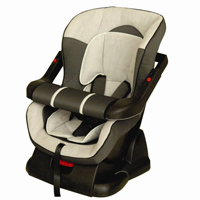
The previous recommendation from 2002 was also for children to ride in rear-facing car seats until they reached the maximum height and weight requirements – or until the child had reached a minimum of age one and 20 pounds. Using this standard, many parents turned the car seats around when their child reached age one.
The NHTSA and the American Academy of Pediatrics issued the recommendation citing a 2007 study in the journal Injury Prevention, which showed that children under age two traveling in rear-facing seats are 75 percent less likely to die or suffer severe injuries in car accidents.
The two groups made additional recommendations for booster seats, saying children should ride in them until they have reached four feet nine inches tall and are between eight and 12 years old.
The groups also recommend children ride in the backseat until they are 13.
The new recommendations come as motor vehicle accident deaths among children under age 16 have decreased significantly in recent years – 45 percent between 1997 and 2009, according to the American Academy of Pediatrics.
But motor vehicle accidents remain the leading cause of death for children ages four and older. More than 5,000 children, teens and young adults up to age 21 die in motor vehicle accidents each year. For every fatality, 18 children are hospitalized and more than 400 require medical care.
Massachusetts law requires child safety seats to protect children from car accidents. Children must be secured in child safety seats until they turn 7 years old.
Click here for more details about Massachusetts’ Child Passenger Safety Law.
Read More
Supreme Court Ruling in Defective Seat Belt Case Victory for Consumers
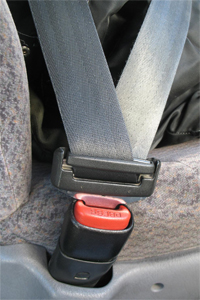 In a unanimous 8-0 ruling, the U.S. Supreme Court recently held that the Federal Motor Vehicle Safety Act does not preempt product liabililty claims brought under state common law for defective seat belts.
In a unanimous 8-0 ruling, the U.S. Supreme Court recently held that the Federal Motor Vehicle Safety Act does not preempt product liabililty claims brought under state common law for defective seat belts.
In 1993, the Federal Motor Vehicle Safety Standard (FMVSS) 208 required lap/shoulder belts in all vehicle seats except certain rear seats in vans. In the regulation, the National Highway Traffic Safety Administration (NHTSA) specified lap/shoulder belts were safer, but requiring them in all seat positions would not be cost-effective. The authorizing statute provided that compliance with the standard did not exempt manufacturers from common law liability.
Thanh Williamson died in a car accident while traveling in a Mazda mini-van that fell under this regulation. She was wearing a lap-only seat belt. Her family sued Mazda, alleging the company had a duty under state law to install the safer lap/shoulder safety belts. The case is Williamson v. Mazda Motor of Am., Inc.
A California trial court dismissed the lawsuit, finding the Federal regulation preempted the claims. An appellate court affirmed, relying on the ruling in Geier v. American Honda Motor Co. In that case, the court determined that the preemption applied in an auto defect claim involving the manufacturer’s failure to install air bags.
In Williamson, the Supreme Court distinguished between the regulations governing air bags and seat belts and said the seat belt regulation explicitly encouraged car manufacturers to install lap/shoulder belts. NHTSA supported the plaintiffs in an amicus brief, arguing that its policy objectives would have been met if the lap/shoulder belts had been installed.
Without a regulatory objective blocking installation of the lap/shoulder seat belts, the Court held that the auto manufacturer could not claim preemption based on the Federal agency’s judgment of cost-effectiveness. Such a judgment does not signify preemptive intent in most Federal safety standards, the Court said.
The Court’s ruling was a victory for consumers in the United States. Having the right to bring claims against manufacturers for defective products is not only a vital way to compensate people injured or killed by the defective products; product liability cases are also a strong force for the improvement of safety in consumer products.
Read More
Driving Safely On The Roads This Winter
Massachusetts commuters struggled through a hard January, as a record four feet of snow slammed the region, making for dangerous drives, difficult walking and weary spirits.
As February moves in, both the snowbanks and frustrations keep growing – making it even more important to plan before heading outside, especially if you commute to work.
The risk for car accidents increases in the snow and approximately 70 percent of all winter deaths related to snow and ice occur in automobiles, according to the Massachusetts Emergency Management Agency.
Here are our some safety tips from the Boston personal injury lawyers at Breakstone, White & Gluck:
- Have a well-stocked Winter Emergency Car Kit. It should include a flashlight with extra batteries, cell phone charger, first-aid kit, windshield scraper and brush, shovel and a brightly colored cloth to use as a flag. Click here for other items to include.
- Consider public transportation.
- If you drive, travel during daylight hours. Consider commuting with a co-worker on the most difficult days.
- Slow down on the road. Many times, hazards such as black ice cannot be seen until it’s too late.
- Be extra cautious driving around bends in the road. The tall snowbanks have narrowed the roadways, leaving less room for both you and other cars, increasing the chance for car accidents on snow and ice.
- Give the snow plows extra room to work.
- Be aware you may have to slow down for pedestrians in areas where sidewalks aren’t shoveled.
- Keep your car’s gas tank at least half-full.
- Make sure your car has good winter tires with adequate tread and pressure.
- If you do have to stop your car on the highway, stay calm. Pull off the road and turn off the hazard lights. Take the brightly colored distress flag from your snow emergency kit and tie it to your radio antenna or window. Call the local police and your local auto club for assistance.
How Pedestrians Can Practice Safety in Winter
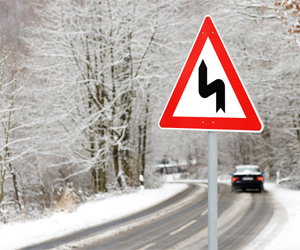 Pedestrians need always be concerned with the cars and trucks they travel alongside, but winter is a time to practice extra caution to avoid pedestrian accidents. Bad weather and areas where sidewalks are not shoveled pose new threats to pedestrians during this time of year.
Pedestrians need always be concerned with the cars and trucks they travel alongside, but winter is a time to practice extra caution to avoid pedestrian accidents. Bad weather and areas where sidewalks are not shoveled pose new threats to pedestrians during this time of year.
During and after snowstorms, drivers struggle with road conditions and visibility, increasing the risk for car accidents and pedestrian accidents. A driver’s ability to see pedestrians is often impaired by large snow piles and shorter hours of daylight. Pedestrian accidents are more likely in areas where sidewalks are not cleared and pedestrians are forced to walk in the road.
These factors mean pedestrians have to plan their travel carefully and dress appropriately. The Massachusetts pedestrian accident lawyers at Breakstone, White & Gluck offer these tips:
- Limit your walking where snowbanks are high. If you have to walk outside, avoid walking at night or during the snowfall, when there is less visibility.
- If you can, find out in advance whether the area you will walk has cleared sidewalks. This is important on busy traffic routes, back roads and highways. Plan accordingly.
- If you have to walk outside, carry a cell phone in case of emergency. But do not use it while walking in the roadway or crossing the street. To avoid a pedestrian accident, wait until you reach a sidewalk or a safe area in a parking lot. (Some states are considering banning cell phone use while crossing streets. Click here for a New York Times article on the subject). Even if it is not the law, it is good practice!
- Wear lightly or brightly colored clothing. Reflective neon clothing can provide benefits in both daylight and night hours by allowing drivers to see pedestrians sooner and adjust their driving if necessary. Some walkers use flashlights or even flashing lights to warn vehicles.
- If you see a commercial truck with snow on its roof, contact the company to report the driver. Snow on top of a vehicle can slide off and be thrown at other motor vehicles and pedestrians, causing car accidents and significant personal injuries. Look for the name of the company on the vehicle’s exterior or take note of its name. It’s best if you have at least part of the vehicle identification or license plate number. Several states have laws requiring drivers to clear snow from their vehicle’s roof.
- And if you are driving, take time to clear your car as well. This will increase visibility while you are driving, and prevent potential accidents for drivers and pedestrians around you.

